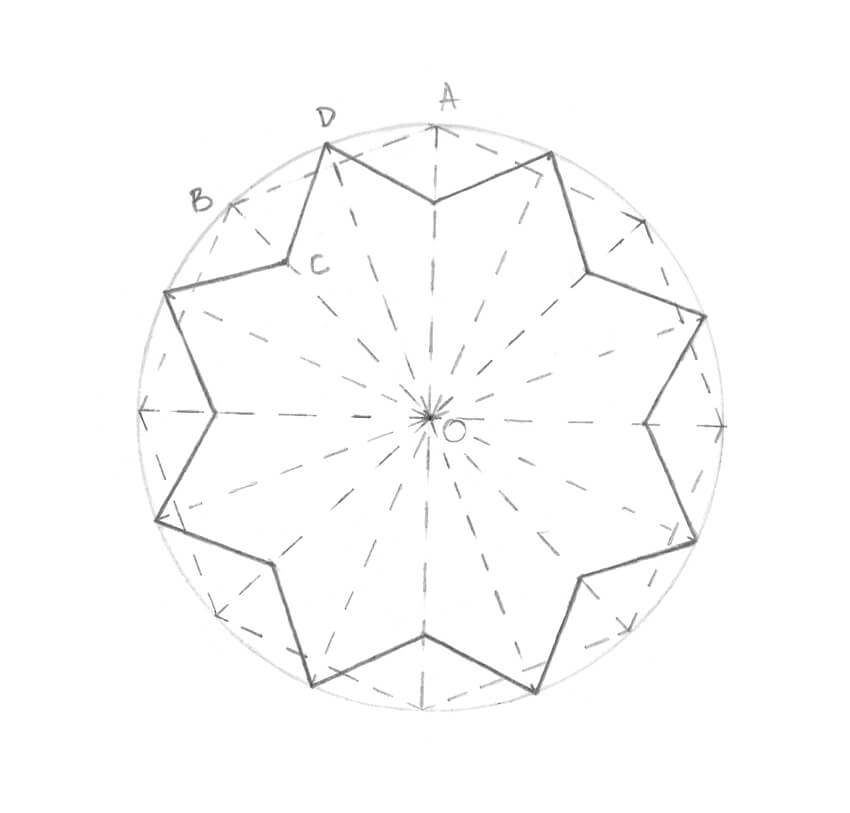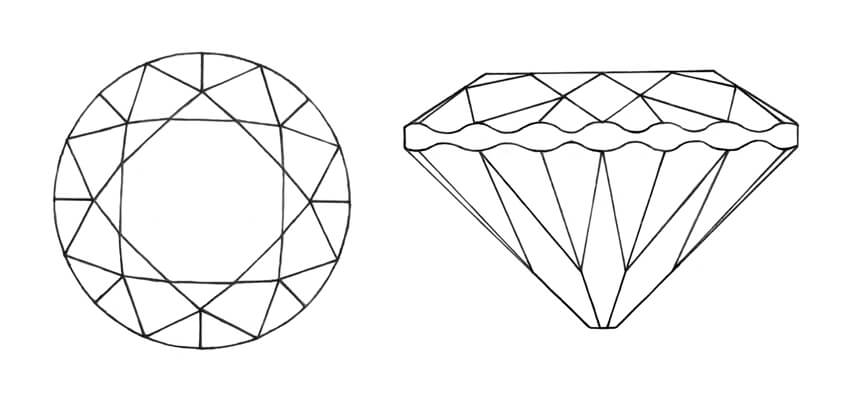A shimmering, mosaic-like design is created by painstakingly laying tiny, coloured resin diamonds on a pre-printed canvas in the complex and artistic art form known as “diamond drawing.” This art form, known as diamond painting, blends paint-by-numbers and cross-stitch techniques to provide a visually pleasing and relaxing experience. The procedure starts with a pre-printed canvas with a design on it. Usually, the pattern is indicated using numbers or symbols, each representing a different diamond colour. The artist gradually constructs the image on the canvas one by one by placing each diamond on the sticky surface with a pen-like instrument. Light is caught and reflected by the tiny diamonds, which are usually faceted like actual jewels, giving the finished piece a vivid and striking appearance.
How to Draw a Diamond
Diamond drawing is valued for its calming and meditative effects and artistic outcomes. Placing diamonds has a repeating quality that can be calming and help lower anxiety and tension. Anyone can do this craft, regardless of ability level, because it is simple to follow, even for inexperienced hands, thanks to the comprehensive directions and well-organised arrangement. For individuals who like creative hands-on activities, it’s a popular hobby because the finished product is a shining work of art that can be framed and shown. Diamond drawing is appealing because it is easy to do and produces visually stunning, professional-looking results that anybody can accomplish with practice and attention to detail.
Drawing diamonds is a complex skill involving various forms and approaches, whether they are baseball diamonds or artistic renderings. People can develop a deep appreciation for the art of drawing diamonds by learning the fundamentals of the craft, honing realistic drawing techniques, and experimenting with innovative expressions like diamond heart drawings.
Baseball Diamond Drawing
Drawing a baseball diamond is a creative and valuable effort to design a particular arrangement that symbolises a baseball field. Choosing a suitable scale is the first step in drawing a baseball diamond. One typical scale that helps to preserve proportionate precision is 1 inch = 10 feet. The broadest portions of the diamond are then depicted as the outfield lines, typically placed roughly 300 feet apart to represent the actual distances found in ballparks. The next step is to identify the boundaries between fair and foul territory and draw the foul lines perpendicular to the outfield lines. These typically span 90 feet and run from home plate to the middle of each outfield line. Following the installation of these components, the home plate is added at the foul line intersection, typically shown as a square with 5.5 feet on each side.
Once the home plate is established, the pitcher’s mound is represented by a circular shape in front of the plate, and the first and third bases are drawn as squares placed along the foul lines. Further elements like the warning track and dugouts can be added to the picture, giving the baseball field setting more context and realism. Ultimately, drawing a baseball diamond diagram highlights the game’s geometric beauty and fulfils baseball fans’ practical needs.
How to Draw a Diamond
It’s essential to pay close attention to angles and symmetry when drawing a diamond shape. The method usually starts with a pencil sketch of the outline to allow for quick revisions. To build a diamond-like shape, draw two long parallel lines at the bottom of the diamond and connect them with shorter, angled lines at the top. More angles and lines must be added progressively as the drawing advances to precisely describe the diamond’s facets. Care should be used when creating each facet to resemble the possible polished forms of natural diamonds. Using a ruler to ensure that the diamond looks sharp and well-defined can assist in making straight, precise lines.
Using a pen or darker pencil, the lines can be made darker once the outline has been drawn. The application of colour comes next, and here’s where shading can provide the impression of depth. Understanding diamonds’ geometric and reflective properties enables artists to represent these priceless gemstones accurately. The interaction of light and shadows is essential in achieving a realistic effect, as the highlight placement depends on the imagined light source impacting the diamond’s facets.
Realistic Diamond Drawing

The art of realistic diamond sketching explores the complexities involved in producing three-dimensional images of diamonds. Building a base shape, which acts as the diamond’s bottom point and is often an isosceles triangle, is the first step in this procedure. Subsequently, the base is divided to outline the facets characterising the diamond’s distinct appearance. Symmetry is considered when creating facets to guarantee that the left and right sides precisely mirror one another. As the sketch progresses, the diamond’s body and top are rendered symmetrically, giving the composition a unified and realistic image. In this phase, colouring is quite essential. To establish the foundation for the diamond’s highlights and shadows, artists typically apply a base coat of colour, such as a vivid cyan blue, and then add layers of complementary colours to create depth. Highlighting is essential because it draws attention to the diamond’s cutting and intensifies the appearance of its brightness and sparkle.
A more realistic portrayal is made possible by blending hues and adding contrasting structures to the edges, which draws onlookers in and highlights the diamonds’ multifaceted character. Knowing colour theory and unusual light reflections and refractions significantly improves the artist’s ability to portray diamonds accurately.
Diamond Heart Drawing
The depiction of a diamond heart blends the diamond cut’s beauty with the heart’s symbolic meaning, which stands for devotion and love. To start this creative endeavour, artists usually outline a heart. The “cheeks” of the heart can be drawn as two overlapping circles, and the bottom tip of the heart can be defined by drawing an upside-down triangle. After the outline is finished, the diamond form must be filled with facets and angles. To mimic the distinctive cuts found in natural diamonds while preserving the qualities of the heart, artists frequently use reference photos. Smoothing forms and guaranteeing symmetry can be significantly helped by digital tools such as Adobe Illustrator.
The diamond heart painting becomes more alluring when adding colour and highlights; artists frequently choose delicate, emotional colours. Metallic or glitter effects can replicate the diamond’s glimmer and highlight the heart’s beauty and significance.
Pencil Diamond Drawing Techniques
Realistic diamond representations can only be achieved with pencil sketching techniques. Artists use shading methods to provide depth and texture, including blending, stippling, hatching, and cross-hatching. The contours and reflections of the diamond can be expressed by artists thanks to the distinct contributions made by each technique to the overall appearance. Artists apply gentle pressure on their pencils to create a foundational layer of shade. They can gradually darken areas hidden from the light by kneading the pencil to manage the value of the shading and guarantee seamless tonal transitions. The drawing is improved by using a variety of pencil hardnesses; harder pencils add small details, and softer pencils produce deeper blacks.
Many artists utilize blending tools like tortillons or fingers to smooth out shadows and highlight areas effectively to ensure a polished finish. The interplay of light and dark creates an appearance of realism and invites viewers into the three-dimensional world of the diamond.
Gaining proficiency in diamond drawing requires various artistic abilities, such as knowledge of perspective, geometry, and shading methods. People can acquire a wide range of talents that honour the complex beauty of diamonds, whether they tackle sketching a baseball diamond or creating complicated artwork featuring diamonds. By examining standard procedures and embracing creative expression, artists can turn basic shapes into spectacular compositions with profound cultural and personal meaning.






